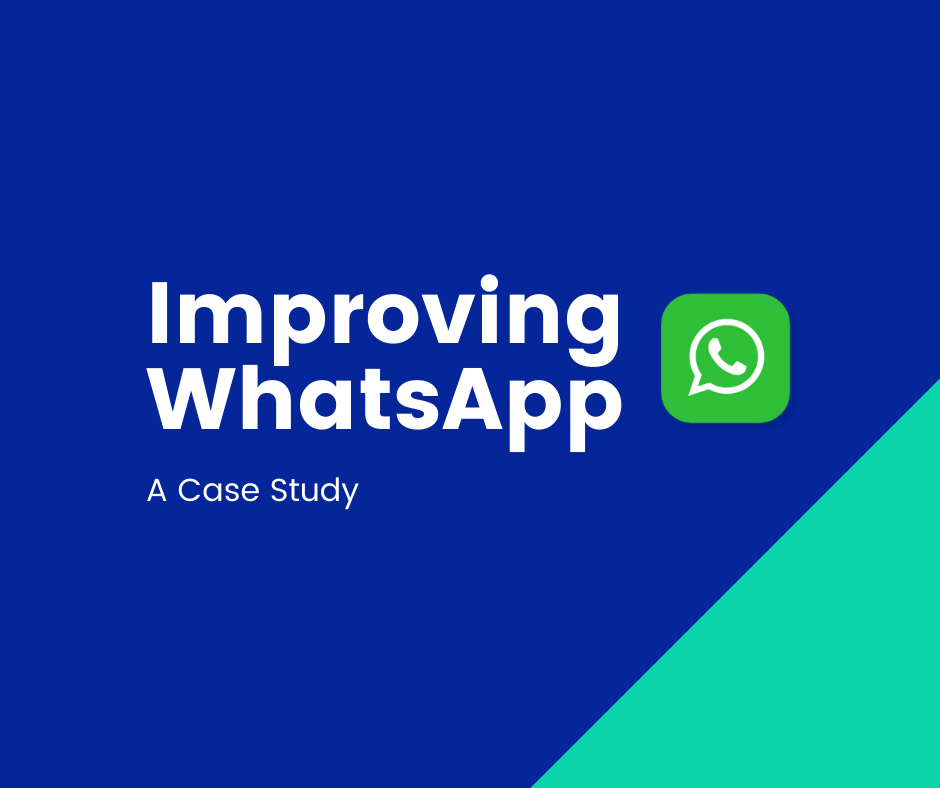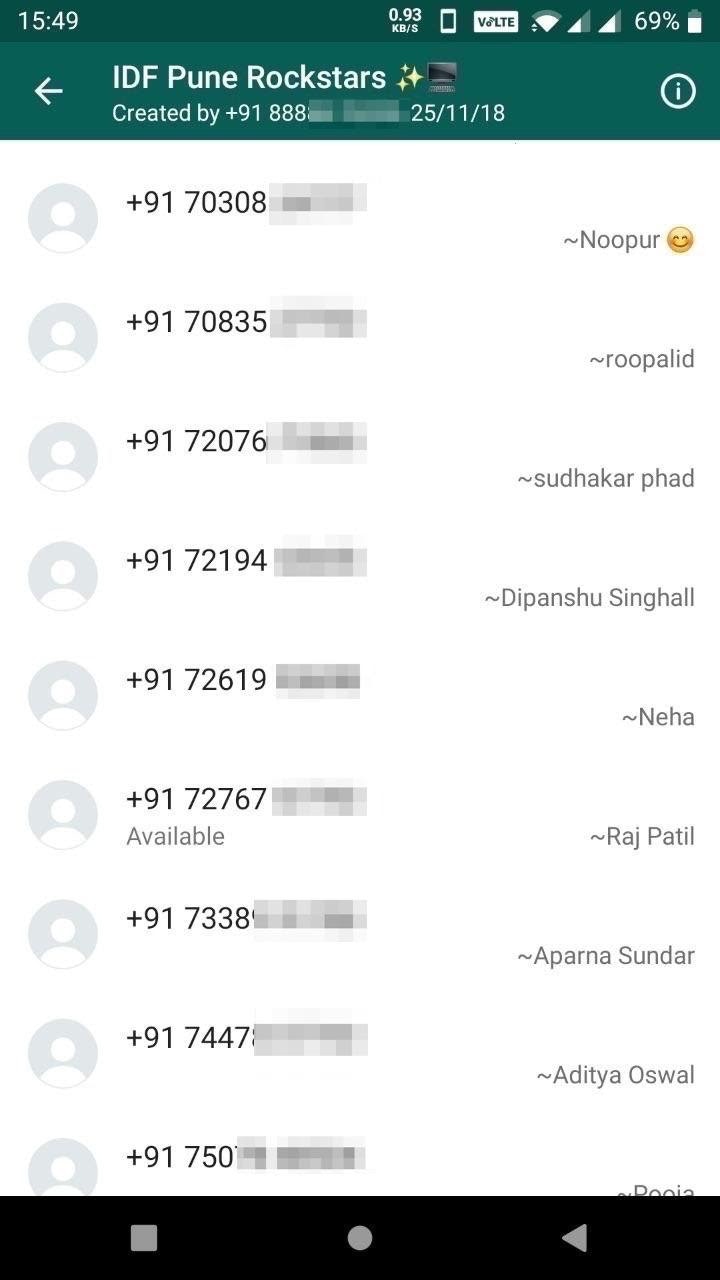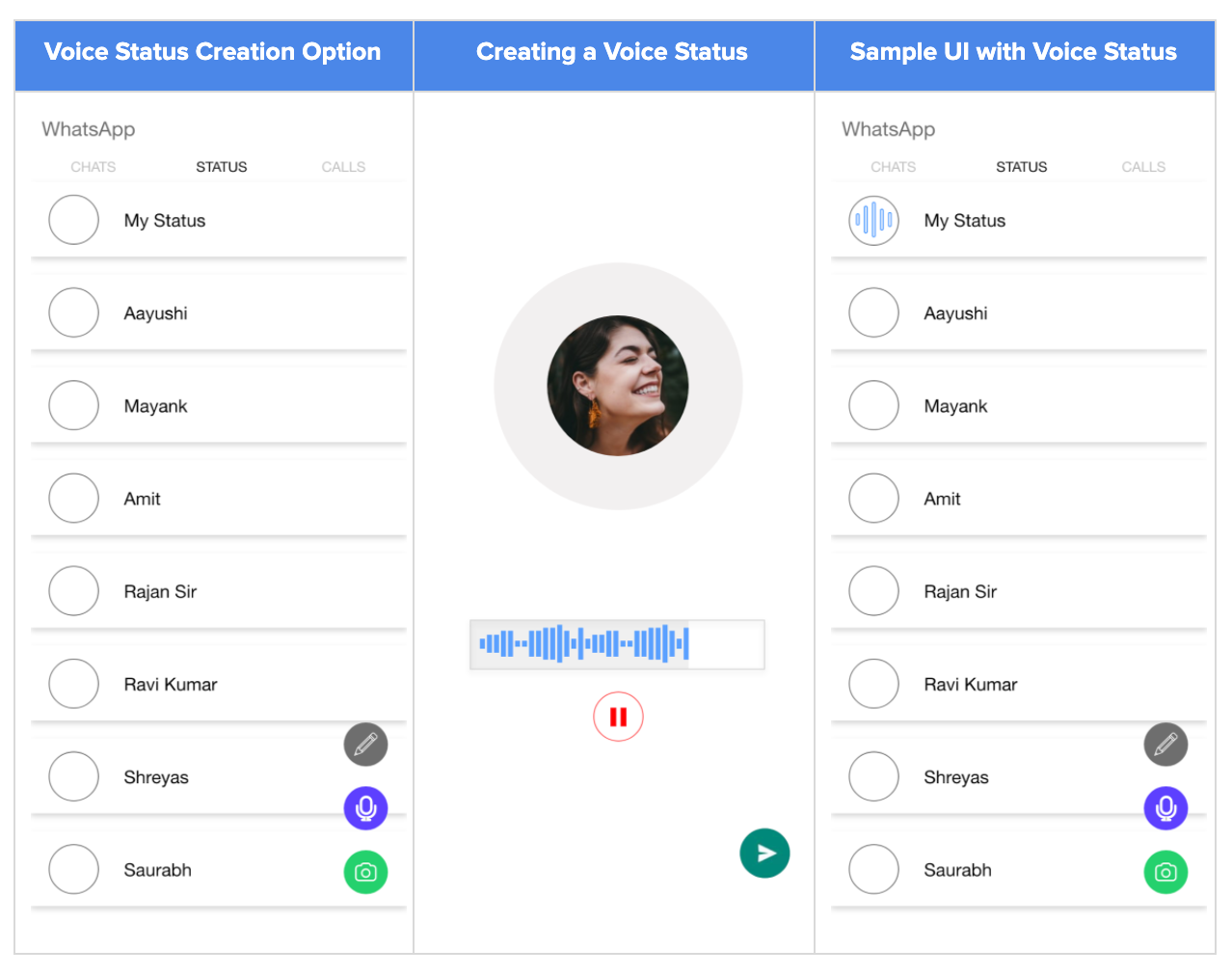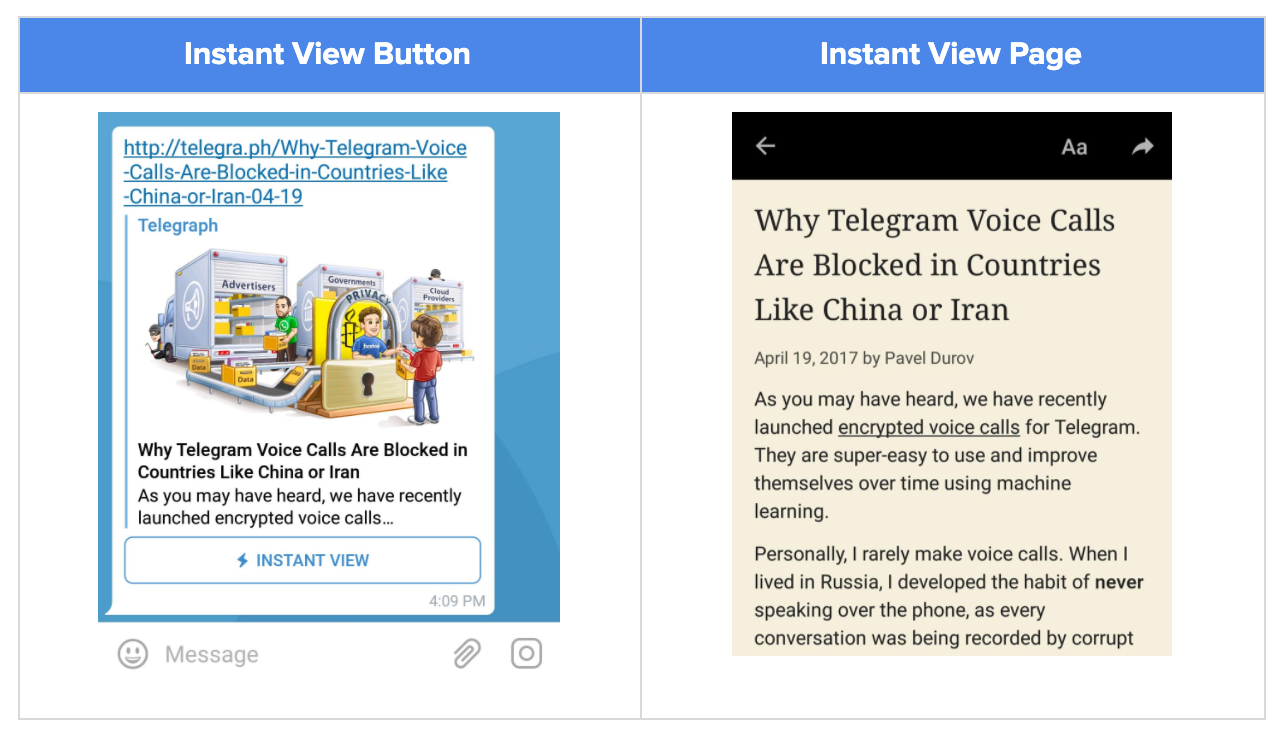
Intro
If you have been interviewing for a Product Manager role (or have done that in the past), you must have come across product improvement questions.
Today I’d like to share a case study of how I would improve WhatsApp (Assuming I am one of the PMs there). Idea is to present how I would think about the problem and come up with a set of possible improvements along the way. Let’s get started!
WhatsApp Intro
Before I dive deep into WhatsApp, I’d like to share my understanding of the WhatsApp app briefly:
WhatsApp is a well known messaging app owned by Facebook. Currently, there are more than 2 billion WhatsApp users, making it the default messaging app around the globe. WhatsApp is available in more than 180 countries and 60 different languages.
Here are some popular features of WhatsApp:
- Simple, reliable text and voice messaging.
- One to One private messaging.
- One to many groups messaging.
- Broadcasting messages via broadcast groups and the status feature.
- Sharing various document types (Image, Document, Location, Contact, etc.).
- Private and Group Video calling.
WhatsApp SWOT
Strengths of WhatsApp
- Most Popular: WhatsApp is still the most popular mobile messenger app globally.
- Setup: The setup process is very intuitive, only requires your phone number and OTP. No need to remember username/password, which makes it a straightforward onboarding process, especially for the older generation.
- Encryption: End-to-End, encrypted by default, making it secure and safe for all kinds of messaging.
- Platform Availability: WhatsApp is available on all kinds of platforms: Android, iPhone, Mac, Windows, Web, which makes WhatsApp easy to use on whatever device users have.
- Group Video Calling: You can do group video calling to max eight people.
- Whatsapp for Business: Ability to create simple bots for businesses to cater to the needs of their B2B users.
- Owned by Facebook: Finally, being part of the FB/Instagram family allows it to leverage each other in various ways.
Weaknesses of WhatsApp
- Lacking Innovation: Other platforms like Telegram (Example Broadcasting channels), Hike (Example Hike Land), Snapchat (Self-destructing messages, Lenses, etc.) are innovating at a much faster pace.
- Leaks private info: Phone numbers of users are leaked via Group member lists

- In-App Browser: Lacks In-App Browser to view the content within the app.
- Group Member Limit: You can only have 256 members in a WhatsApp group (vs. telegram of 200K).
- Gen Z Features: Lack of self-destructed messaging, cool Snapchat like filters, Poll/Quiz creation, animated stickers like Snapchat, and Telegram, which is attractive to Generation Z (While animated stickers have launched on WhatsApp, they are no match to telegram stickers IMHO).
- Document Size: You can only attach documents of maximum 100MB size (vs. 2GB in telegram)
Threats for WhatsApp
- Better apps for the group discussion: Telegram, Slack, and Discord are much more superior in group discussion capabilities. While some people currently prefer WhatsApp due to its distribution, eventually, any larger groups move out of WhatsApp due to its lack of admin capabilities, size limitation, ability to automate, etc.
- Professional Video Calling: Google Meet & Zoom have captured this market even though WhatsApp could cater to this segment.
- Open API: Other platforms have open API, making it easy to build and host bots that automate businesses. While WhatsApp has an API, it is behind closed doors, unlike telegram APIs.
Opportunity for WhatsApp
- Richer interaction: Like a message, Short reply to a message, the ability to create Polls, Quizzes, Games, Watching videos together, etc can be added to increase engagement.
- Richer Status: Voice Status, Polls, Quizzes.
- Always on voice-only group chats: Think Clubhouse meets WhatsApp.
- Newsfeed: Build a news feed inside the app, making it easier to share verified news (Think Google News, which sources all the information from various news platforms).
My Assumptions
- While WhatsApp Pay tech is ready, it is still not launched globally yet (Except for Brazil). Since it depends primarily on financial bodies’ approval, I will ignore it as part of my consideration.
- Self-destructing messages are coming to WhatsApp, so I’ll not consider it further.
Possible Goals
Now that we have listed the WhatsApp SWOT analysis and have a brief idea of what it can do let’s look at what all it might want to do.
- Increasing the number of active users.
- Increasing the number of new users on the platform.
- Increasing user engagement with the product.
- Increasing user retention.
Before we narrow down on goals, let’s also look at the age and gender split (below is for India, but we can extrapolate from this):

Considering that the majority of the users of WhatsApp are 13-34 yrs old, and we have competing apps like Snapchat, Telegram catering to the same set of users, we’ll keep the following as our base criteria:
Base Criteria:
- Age group 13-34yrs.
- Increasing user engagement of the product.
- Improving the current UX.
- UX should remain simple to use.
Reason for above is:
- If the platform does not adapt to the newer generation soon, it threatens to lose its market dominance eventually.
- There is still a lot of room to improve the current UX. Hence we’ll focus on that which will help us, in return, increase user engagement.
Possible Pain Points
Here are some of the pain points faced by our selected user group:
- Too many short messages in a group causing a flood of notifications (Example, single emojis, thank you, awesome, etc.).
- No ability to gather feedback from your friends, family members, etc.
- No simple inbuilt games to play with your friends and family.
- Many users want to share their voice (songs they sang, share a quick update on status, etc.). But currently, users cannot share only voice status update.
- Clicking on a link takes you outside the app, adding extra steps.
- Video file size sharing is limited to only 16MB!
A Possible Set of Features
Based on the above-listed pain points and our goal to improve user engagement and current UX, let’s list down a list of possible features to resolve them. With each feature, we’ll also calculate a score based on formula explained below (adapted from RICE for simplicity)

Where:
- Reach: 1 to 10
- Impact: 1 to 10
- Complexity: 1 to 10
- Score: 0.1 to 100
| S.No. | What | Where | Reach | Impact | Complexity | Score |
|---|---|---|---|---|---|---|
| #1 | Users can reply to a message with an emoji inline (👍, ❤️, 😂, 😢 etc.) | Private, Group & Status | 9 | 9 | 2 | 40.5 |
| #2 | Users can reply in-line to a message. Example, Thank you, Awesome, Great! Love it etc. (limited to 12 characters) | Group | 9 | 8 | 3 | 24.0 |
| #3 | Ability to have parallel conversations instead of a single-threaded chat message. A good reference example would be Slack threads. | Group | 7 | 7 | 9 | 5.4 |
| #4 | Ability to ask questions/surveys to friends, family, etc for feedback. | Private, Group & Status | 8 | 6 | 8 | 6.0 |
| #5 | Add Quizzes (Example: conducting simple quiz based games in a group) | Private, Group & Status | 8 | 4 | 8 | 4.0 |
| #6 | Currently the limitation on video upload is merely 16MB. I would like to increase the video file limitations to 1 GB. | Private & Group | 9 | 9 | 4 | 20.2 |
| #7 | Ability to share voice only status. | Status | 7 | 7 | 3 | 16.3 |
| #8 | Ability to view a link within WhatsApp instead of jumping out of the app. | Private, Group & Status | 9 | 8 | 6 | 12.0 |
| #9 | Currently WhatsApp lacks the kind of cool filters Snapchat and other similar apps have. One of the primary use cases of WhatsApp is to share images/videos, adding cool filters would enhance the experience of using WhatsApp for the target audience. | Private and Group | 8 | 7 | 8 | 7.0 |
Top Five Priority Features
Based on the above scores, here are our top 5 priorities:
- Feature #1 (Score 40): Ability to react to a message
- Feature #2 (Score 24): Ability to write a short inline reply
- Feature #6(Score 20): Increased Document Size from 100MB to 1 GB
- Feature #7 (Score 16): Voice Status
- Feature #8 (Score 12): Ability to view a link within WhatsApp
Looking back at the base criteria we have set, they all fulfill the following:
- Age group 13-34yrs.
- Increasing user engagement of the product.
- Improving the current UX.
- UX should remain simple to use.
Feature 1 & 2: Ability to react to messages (emojis + short inline replies)
Problem
Every WhatsApp group is plagued with most messages containing an emoji or a short message as a reply to another message. These messages are typically: 😂, 👍, ❤️ etc. or a brief response like “Awesome”, “Amazing”, “Thank you”, etc.
Real-world example:

Solution
We could allow users to react to a message inline either via a single emoji or a short message (less than 12 characters). The idea is to collate all these reactions next to the original message. And also to reduce the number of notifications received by all the group members.
Notifications for reactions will only be sent to the original message sender, reducing the number of notifications in a group. This feature will increase the signal to noise ratio, thus making the WhatsApp groups much more useful.
Users can view a detailed breakdown of reactions by clicking on the ... button
Here’s a demo UI of the feature:

Please do note: Above is not a final mockup, but to convey the usability of the feature. An actual mockup will be defined once this feature has been approved to be part of the roadmap.
Open-ended questions to resolve
- Since WhatsApp groups, videos, and photos instead of showing them one by one, can users react to each image/video or all of them together?
- Can users edit/delete their reactions or only delete them within a defined time limit like other messages?
- Can users react with any emoji or a limited set of emojis?
- Is 12 a justified character limit? What should be the limit for non-Latin languages like Arabic, Mandarin, etc.?
Feature 6: Increased Document Size from 16MB to 1 GB
Problem
Currently, WhatsApp only allows attaching a video of a maximum of 16MB size. With the advancement in internet speeds and our phone cameras’ capabilities, this is increasingly becoming an issue with users wanting to upload longer, higher quality videos.
Current workarounds
- Users upload it to Youtube and share the link on WhatsApp. But this is a cumbersome approach as a lot of people don’t know how to upload, youtube automatically switches streaming quality and no ability to download it first.
- Users compress the video via 3rd party app. Again this is not an ideal workaround as it requires 3rd party apps, and sometimes you want to share videos without affecting their quality.
- Sharing it via other messaging platforms like Telegram (which allows file-sharing of 2GB!)

Solution
Increasing the file size limit to 1GB will enhance the UX of sharing high-quality videos/images. This limitation is likely an old decision made by the WhatsApp team that now requires revision. Since Telegram went ahead and did it, it is less of a technical issue and more of a decision to be made by the product team.
Open-ended questions to resolve
- What is the ideal file size limit? Is 1 GB the right limit?
- How will this impact users living in low bandwidth areas?
- What is the average length/file size of videos shared on Facebook? We could perhaps use some metrics from Facebook and extrapolate it to take a decision.
Feature 7: Voice Status
Problem
Currently, users cannot share voice updates on status. It can only be text, video, or image. If a user wants to share a song, or quickly share a voice update with their contacts via status; they can’t do so. They’ll have to create it as a video.
Current workarounds
They can do it by creating a plain video with a base image with their voice over it. While this can work, it’s pretty cumbersome.
Solution
Allow users to create a voice-only status option. This will be a new option available under the status UI. Following is a sample demo UI to better understand how the feature might look.

Open-ended questions to resolve
- How will the 30-second status limit be enforced on voice status?
- If users can record longer than 30 seconds, will it be broken automatically into multiple statuses?
- Can users upload an mp3 file instead of recording it?
- Can users pause the recording (or like videos, there is no possibility to pause)?
- Can users respond to voice status via voice as well or only text?
- Can users add headings to their voice status?
Feature 8: Ability to view a link within WhatsApp
Problem
When you click on a link, it opens another app to load the link. While youtube videos play inside the app nowadays, other links like medium, news app links, etc. load outside the app. This causes users to switch context.
Current workarounds
No workarounds are available.
Solution
An instant view button can be implemented that loads the content within the app directly. Here’s an excellent example from the telegram app on how it can be achieved:

Open-ended questions to resolve
- How exactly will WhatsApp interpret the page automatically? We can take inspirations from how telegram & open source tools like boilerpipe do it.
- What happens if a page cannot be instantly viewed? Should we not show the button?
- Can we use AMP preview of the pages to load the AMP version of pages like news articles, etc.?
- How does this interact with the reaction feature?
- Can website owners submit changes to the way preview is generated for their website (submitting new templates for specific pages on their website)?
Conclusion
While the above features were designed keeping the younger generation in mind, we also made sure that the selected set of features doesn’t affect other age groups. The idea is to improve and delight users across all the generations around the globe. These features were purposely not fully designed as we’ll need to resolve some of the open-ended questions I have listed which will require us to conduct UX research, work with the designers, along with the tech team to understand the technical challenges that they might bring.
Working together with various teams, I hope to improve WhatsApp that makes interacting with your friends and family an even more joyful experience.


